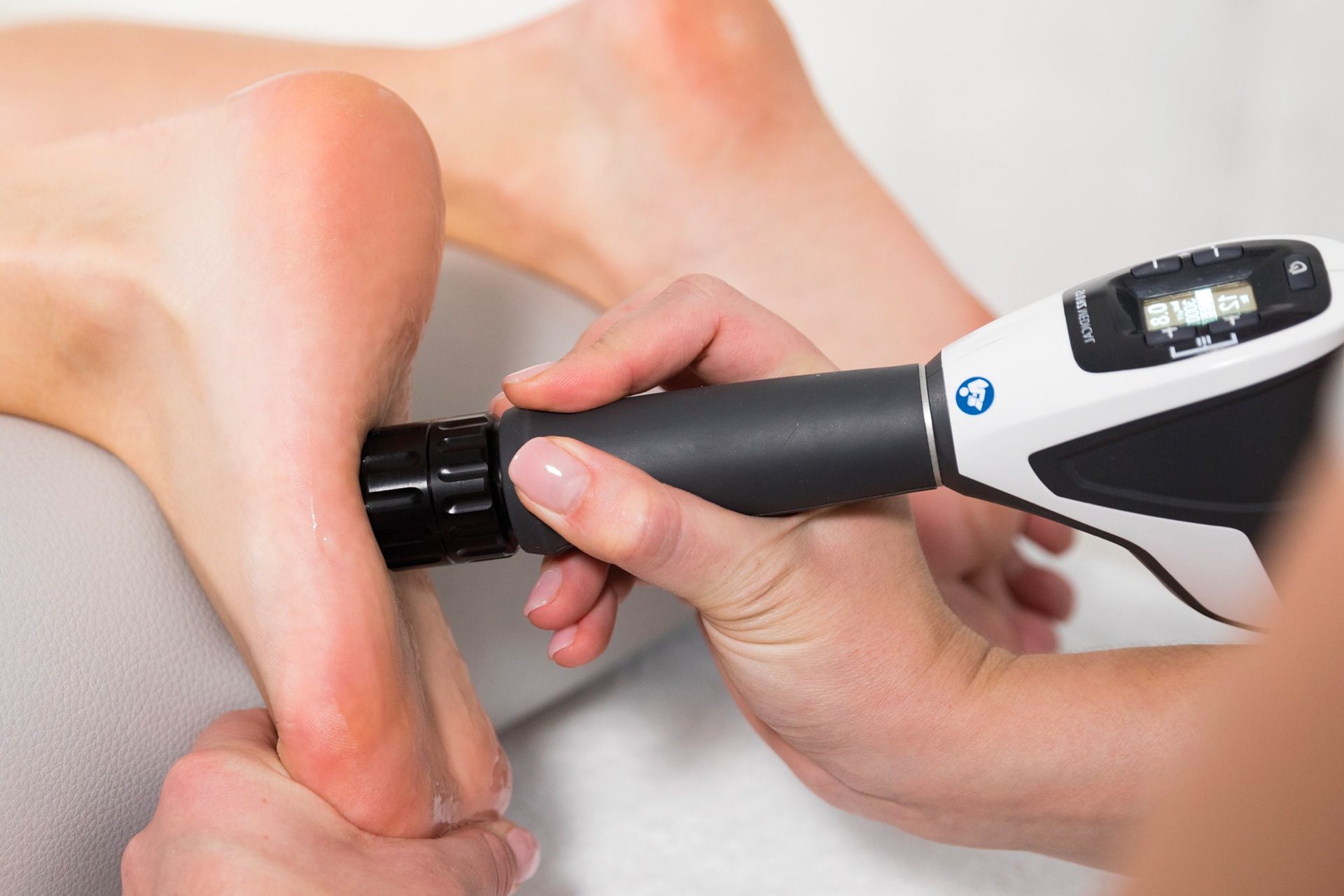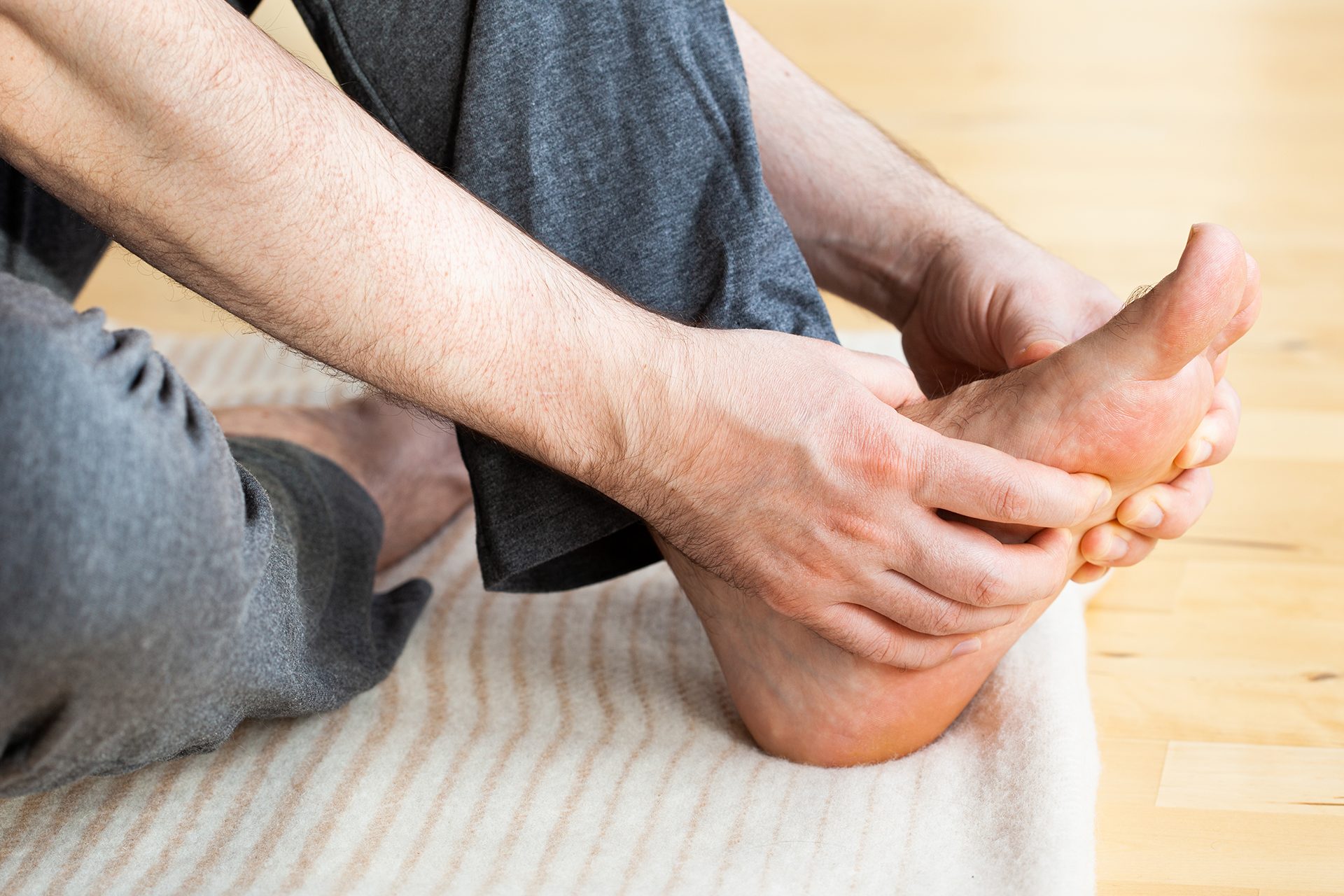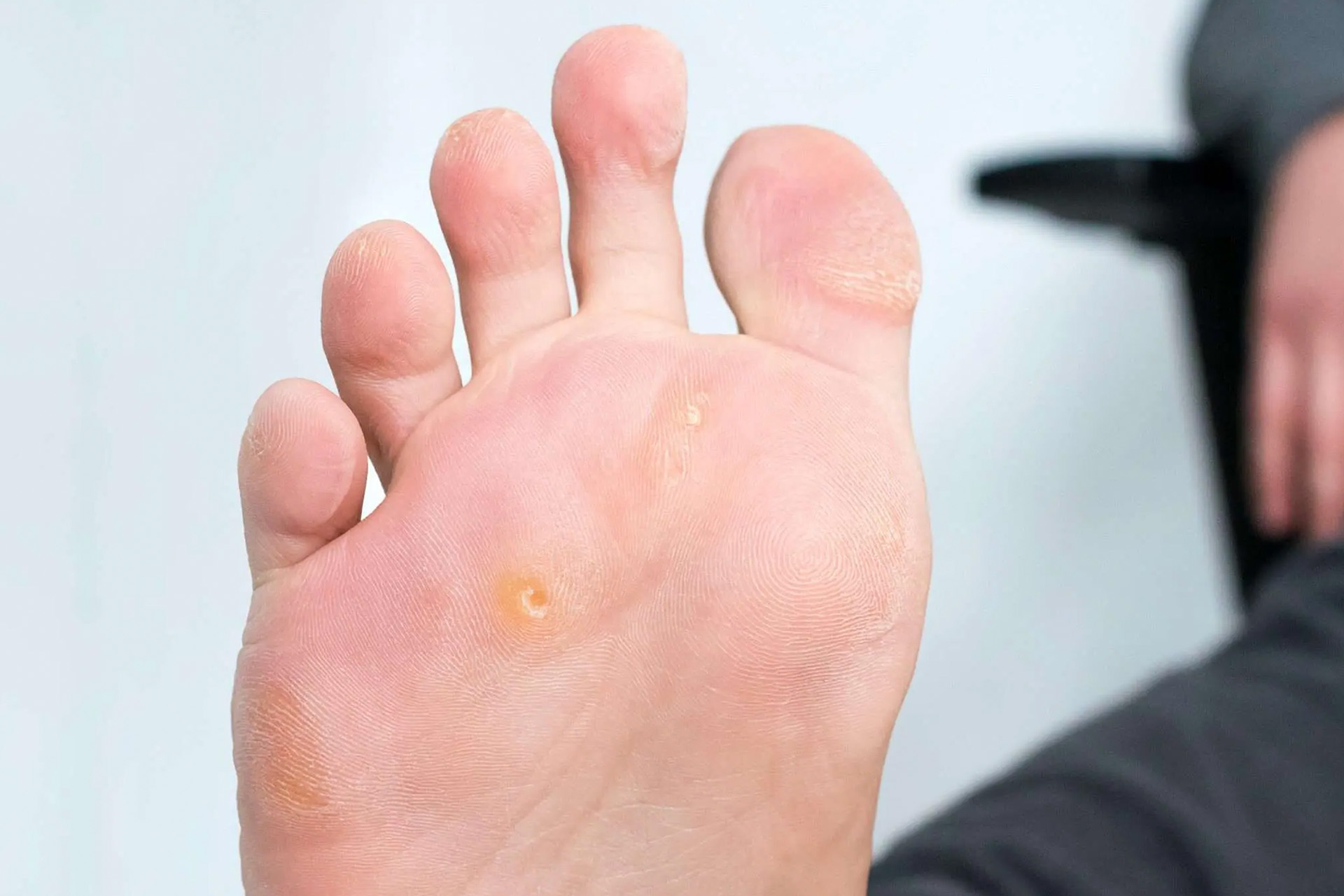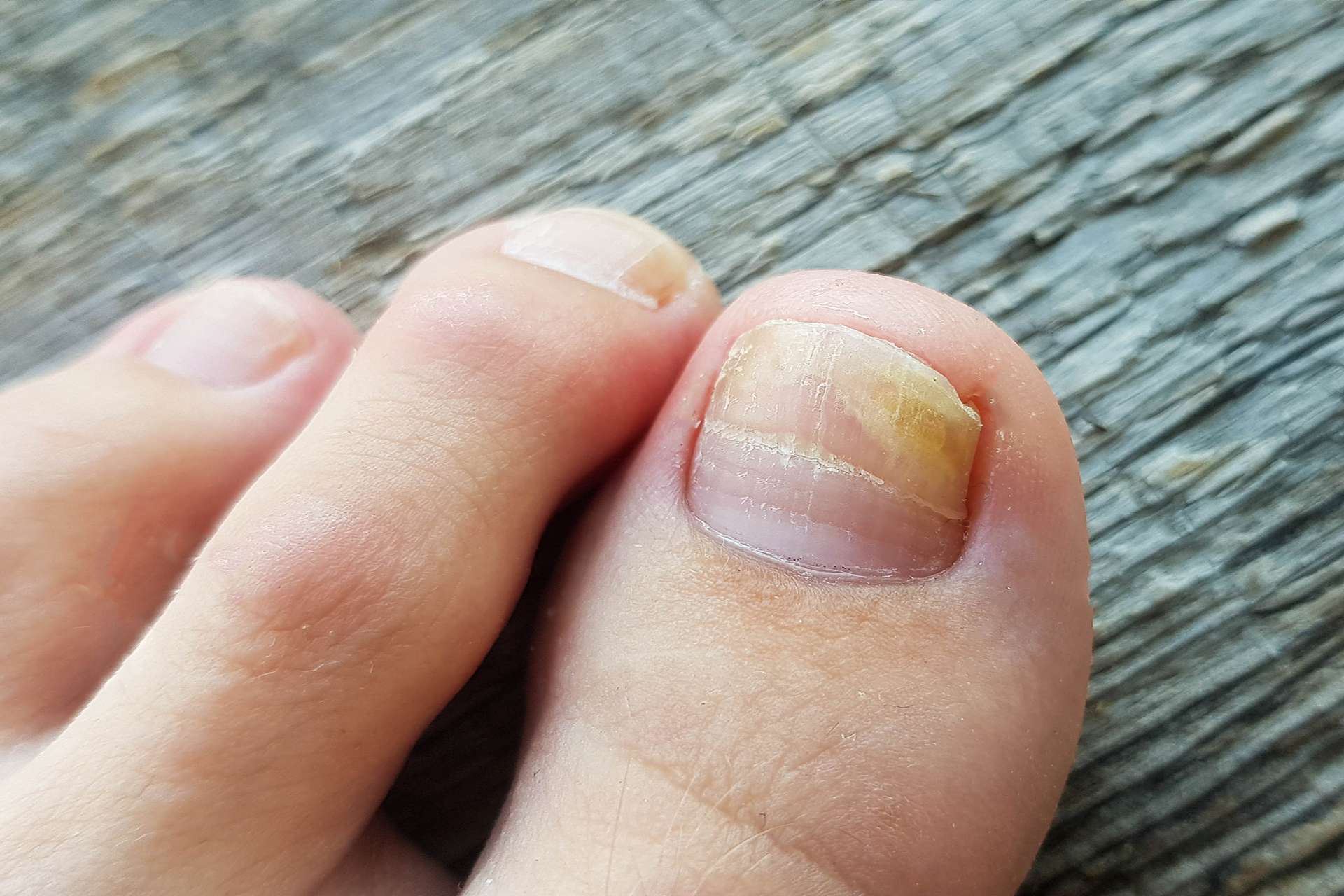Plantar Fasciitis Is a Common Condition of Heel Pain
The plantar fascia is the long fibrous ligament along the bottom of the foot. It is one of the strongest structures in the body and can bear more than 30 times its weight. Plantar fasciitis occurs when tears develop in the tissue, causing pain and inflammation. The most common ailments include burning, stabbing, or aching pain in the foot heel.
Most people with heel pain feel it in the morning because the fascia ligament tightens as we slumber at night. When you wake in the mornings and swing your feet out of bed to take your first steps, you place pressure on the fascia. The ligament tautens, causing sudden pain. But as your body warms and you increase movement, the tissue warms up, and the pain lessens. However, the acute pain may return after standing for extended periods, increased physical activity, or longer periods of sitting.
The exact cause of plantar fasciitis remains unclear, as several factors contribute to the condition, such as obesity, specific exercise regimes, and age. The most common explanation is biomechanical dysfunctions within the foot, as repeated microtrauma (microtears) of the plantar fascia can lead to chronic degeneration of its fibres. This degeneration also disrupts the pathways for blood flow to the damaged fascia, making it harder for the cells to repair and heal.
So, though one of the problems that can arise from plantar fasciitis, it is not necessarily an inflammatory condition as its name suggests (fasciitis in Latin translates to inflammation). This term is a misnomer, as the condition can occur without inflammation, making plantar fasciosis the more accurate term. However, most people, including ourselves, use the term plantar fasciitis as it is what most people mistakenly understand it to be.
Can A Podiatrist Treat Plantar Fasciitis?
In many cases, diagnosing heel pain as plantar fasciitis is incorrect, as numerous muscles, soft tissues and nerves interact with the heel. This is where a trained podiatrist with experience treating sports injuries and foot and ankle conditions can assess your heel to provide the right therapies and treatment options to alleviate your plantar fascial pain.
The most immediate step to address plantar fasciitis is to reduce the forces that are stressing the plantar fascia. One offloading technique is low-dye strapping, where your plantar fasciitis specialist applies medical tape to the foot to support the relevant areas, such as the arch or ankle. This can be very helpful either before or during a running event.
However, taping is only a short-term solution, addressing immediate pain, swelling, and inflammation. To best recover, it is best to adapt your exercise routine to include more non-weight-bearing exercises. Sometimes, taking a break from running may be necessary to ensure your foot recovers.

Non-Invasive Plantar Fasciitis Treatment Options
- Shockwave Therapy: Extracorporeal shockwave therapy can help you get back on your feet immediately and is part of a balanced treatment protocol if you’re looking for a quick way to heal plantar fasciitis. It is used to alleviate short-term pain by stimulating local inflammation, increasing blood circulation, and regenerating tissue.
- Footwear Assessment: Tight calf muscles appear to be a risk factor that can lead to your body overcompensating, resulting in plantar fasciitis. An assessment with our podiatrist can help you identify the proper footwear with the right amount of cushioning. Wearing running shoes with a higher heel-to-toe drop, for example, will ensure all parts are cushioned enough and prevent other injuries like blisters or calluses caused by friction.
- Orthotic Insoles: Sometimes, the problem lies with the angle of the foot when it lands on the ground. Orthotic insoles can help to correct extreme foot pronation, where the arch of the foot flattens due to the angle of the step. Foot orthotic insoles, in many cases, will relieve the pain by altering the way the foot lands, reducing the excess force passing through the plantar fascia. Custom-made or premade orthotic insoles can be catered to your gait to help the plantar fascia function properly. Adjusting the angle and pressure on the foot through orthotic insoles can also help restore the foot to its usual function, hopefully addressing the conditions that allow for plantar fasciitis.
- Exercises: Regular stretches throughout the day can help by building strength and flexibility in the plantar fascia and Achilles tendon. Stretching the calf and hamstring muscles also helps reduce the stress on the plantar fascia. Your podiatrist may recommend using a cooled rolling instrument under the foot three times a day to alleviate the pain from the condition. These exercises are all part of the treatment our podiatrist may recommend as part of your foot mobilization therapy.
- Night Splints: As mentioned, part of the problem with plantar fasciitis is that the muscles in the foot can tighten overnight, creating more pain and discomfort in the morning. Night splints help to stretch the foot throughout the night and prevent you from contracting the muscles while sleeping. They can be worn with socks to make the device more comfortable while helping to ease your pain and assisting in healing.
Can Plantar Fasciitis Cause Toe Pain?
The cause of plantar fasciitis is not completely understood as clinical research continues to evaluate the condition and deepen our understanding of it. From our experience with patients who come into our podiatry clinic, the factors that contribute to heel pain include:
- Micro-tendon tears that stretch from the heel to the big toe
- Overuse injuries that began as a niggling nuisance before becoming a debilitating pain
- Heel spurs and ankle instability
- Lack of big toe mobility

Most foot stability comes directly from the big toe and arch of the foot control. When the foot strikes the ground, the arch and the big toe help to evenly distribute the impact forces across the foot. A healthy gait relies on the ability of the big toe to have a greater toe upward bend at about 50 to 90 degrees when the body’s weight passes over the foot. As the microtears of the fascia degenerate, this restricts the range of motion to tighten the calf and plantar structures.
Can Plantar Fasciitis Go Away on its Own?
Plantar fasciitis can go away on its own, but it can take more than a year for the pain to subside. Further complications and injuries to other parts of the body can occur without proper diagnosis and treatment. As each person’s body and biomechanics differ, an appointment with our leading podiatry team can help you understand the root cause of the specific movement patterns that cause your plantar fasciitis condition.
How Can I Cure or Prevent Plantar Fasciitis?
After an initial assessment of your condition, your podiatrist will prepare a tailored treatment plan designed for your injury. The next step to “curing” plantar fasciitis is progressively increasing activity levels. This will allow the plantar fascia to adapt gradually until it can handle the usual running pressures.
You can also ease recovery by wearing a podiatrist-prescribed orthotics insole or shoe inserts while returning to your preferred running level. Adhering to a plantar fasciitis treatment exercise plan to stretch the plantar fascia and Achilles tendon will stimulate healing and prevent the condition from worsening. Ultimately, our goal at The Foot Practice is to limit the risk factors linked with overloading, as your foot needs to be ready for proper weight-bearing activities to recover best.
Through our pioneering 3D infrared analysis, our team develops a gait retraining programme to help you avoid future injuries. The cutting-edge technology examines aspects of your gait, including foot pronation, hip extension and abduction, dorsiflexion, maximum eversion, and other factors, to re-educate your gait to improve running efficiency and reduce injury risk. Using measurable real data, we monitor the effectiveness of your progress to ensure proper foot function.
Finally, a balanced diet should help the plantar fascia repair and allow biological regeneration of the injured tissue.
Where Can I Find Help with Plantar Fasciitis?
If you are suffering from plantar fasciitis, contact our podiatry clinic before what seems like a small issue becomes a chronic condition or a more complex injury. Our clinical team of experts in Singapore for plantar fasciitis treatment of injuries can help you find pain relief and get back to your everyday activities.
We offer a variety of plantar fasciitis treatments that can help reduce inflammation and promote healing in the damaged tissue. The Foot Practice’s integrative approach includes footwear analysis, biomechanics training, orthotic therapy, and other treatments customized for your needs. Contact The Foot Practice today to schedule an initial consultation with our experienced professionals in Singapore.







